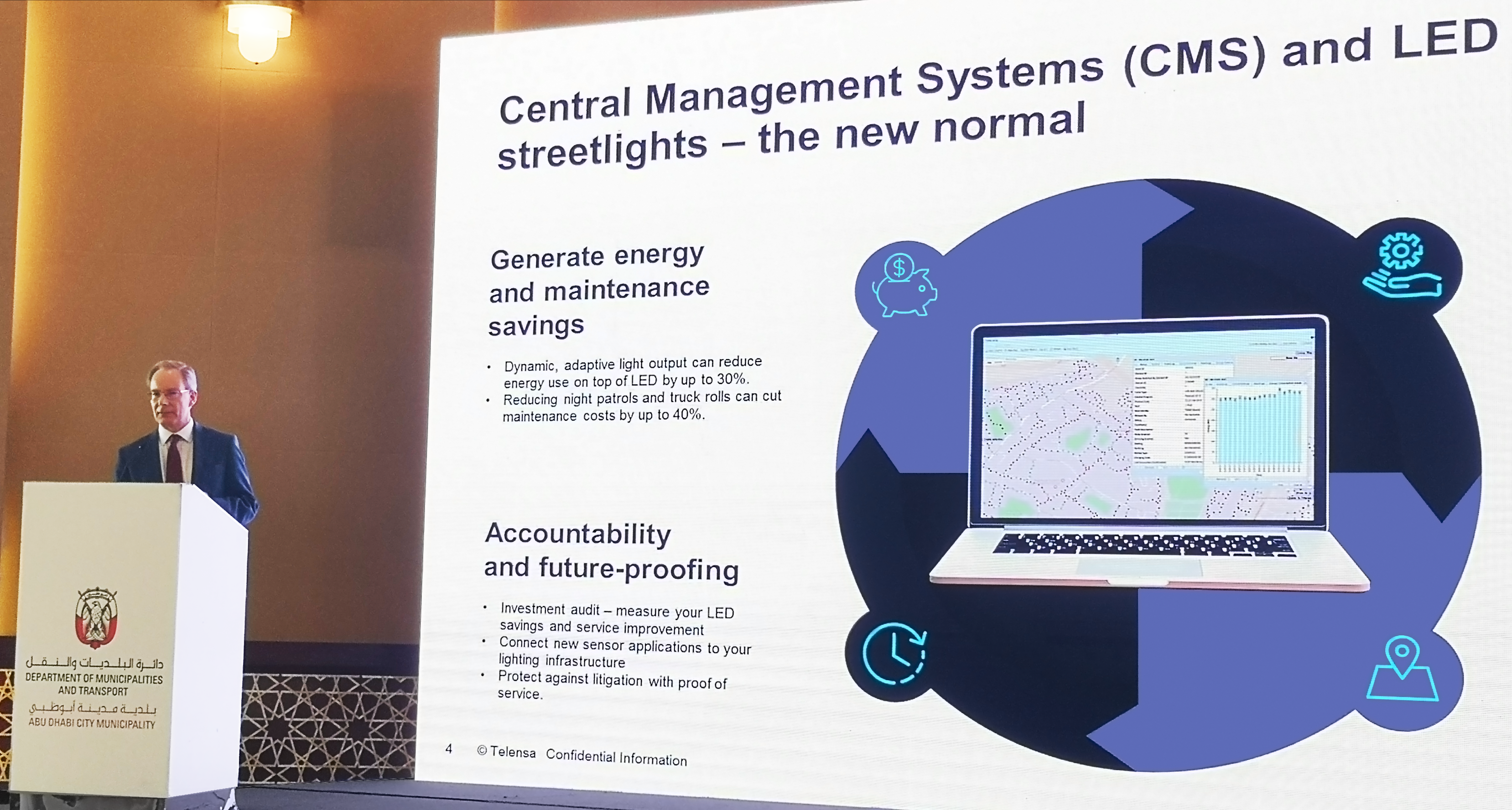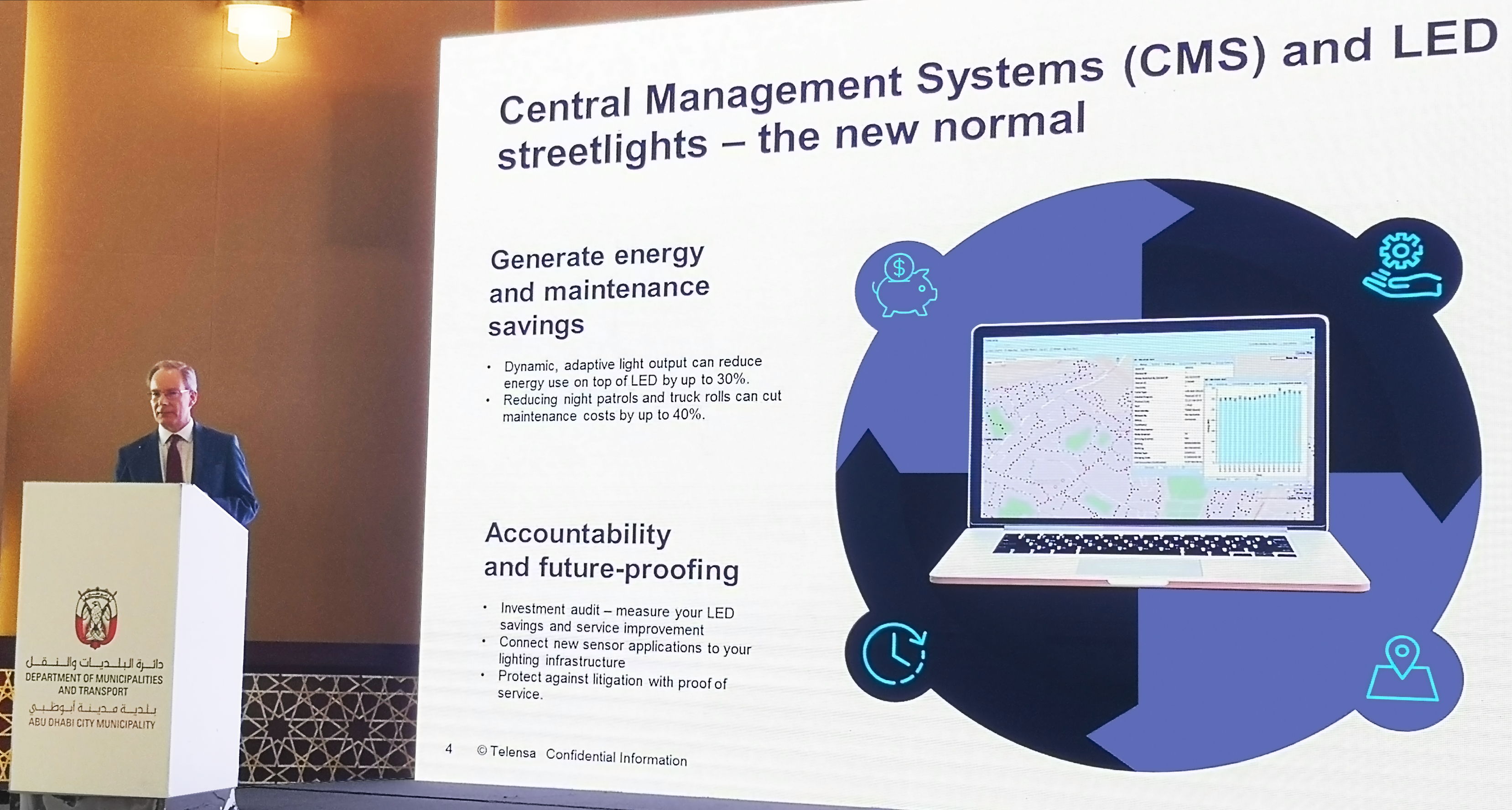
 Last week at the Abu Dhabi Municipal Lighting conference, Telensa co-founder Will Gibson presented on the potential for wireless outdoor lighting controls to act as the foundation for a range of smart city applications.
Last week at the Abu Dhabi Municipal Lighting conference, Telensa co-founder Will Gibson presented on the potential for wireless outdoor lighting controls to act as the foundation for a range of smart city applications.
Drawing on more than a decade of lighting control innovation, and deployments around the world approaching two million lights, Will is well-placed to offer a clear vision of the market’s evolution. Here are the top three take-aways:
Smart street lighting controls are becoming the global default
Deploying wireless controls with LED upgrades has a proven business case in its own right, and also plays a key role in auditing the performance of LED lights in terms of energy savings and reliability. Over the past few years this has been backed by a drive towards interoperability and standards as the lighting controls market has matured. Increasingly, central commands used to adapt lighting levels are informed by dynamic sensor intelligence, for example in response to changing traffic volume, to further improve an already compelling business case.
City sensing solutions are in their infancy
Smart streetlight infrastructure can be a low-cost method to test the business case for a variety of sensor applications hosted on or near light poles. It is the business case that will define the choice of sensor and network connectivity, so cities need to be cautious about getting locked into individual sensor and network ecosystems. Committing to technology monocultures may prevent adopting future innovation and driving academic tie-ups and entrepreneurship clusters. In fact the likely consolidation point for smart cities is unlikely to be around a sensor type or a wireless network. It is much more likely to be around a cloud data platform, where openness, interoperability and security can enable sensor data to work for operational efficiency and better services for citizens.
Urban data can transform city efficiency, safety and experience
Direct-sensing devices like air quality monitors are increasingly being joined by a new generation of devices that generate insights from video using edge Artificial Intelligence. AI techniques have the potential to enable a city to make incredibly sophisticated data-driven decisions. The challenge will be how to control that sea of data and to make it work transparently for the good of the city and its citizens.
When it comes to public infrastructure, the United Arab Emirates has a strong track record of implementing innovative and environmentally sustainable solutions. In the case of street lighting, the Abu Dhabi Municipality (ADM) took a typically systematic approach. The ADM sustainable lighting strategy was the result of an intensive international study, and combines best practices from leading countries around the world. These principles of sustainable lighting have been encapsulated into the Public Lighting Guide, a precise 500-page document for lighting designers to follow, covering the lighting of streets, buildings, parks and public squares.
Working with partner ACS Wireless, Telensa has deployed several flagship projects in the UAE street, highway and maritime lighting.
Are you interested in what smart street lighting can do for your city? Watch our video to learn more.
Topics: Smart cities, IoT, smart streetlights, smart city events, local authorities, open technology

